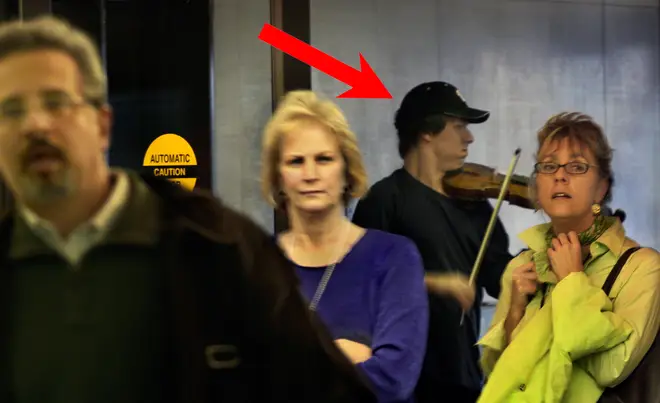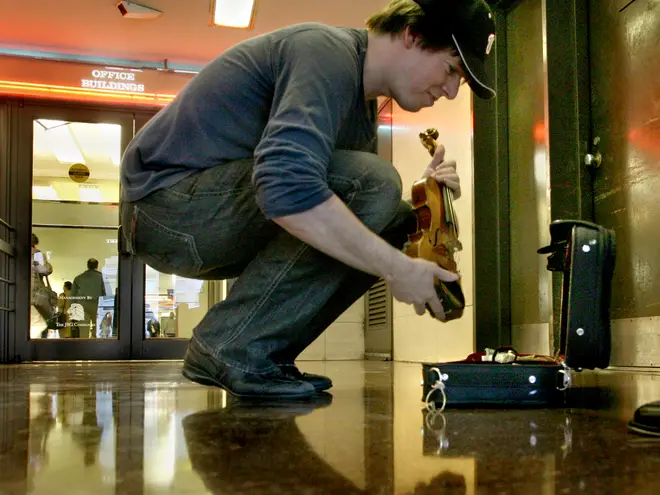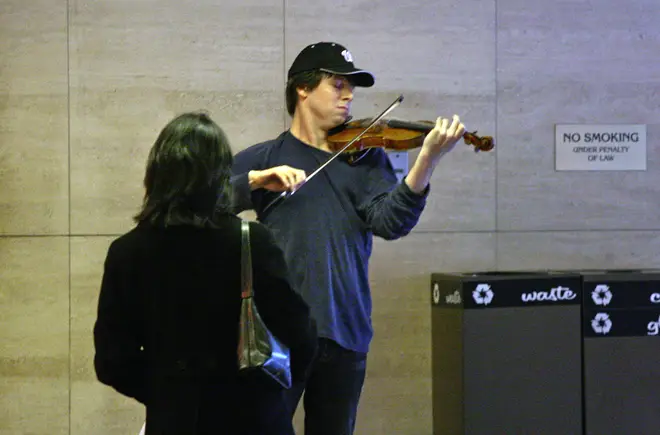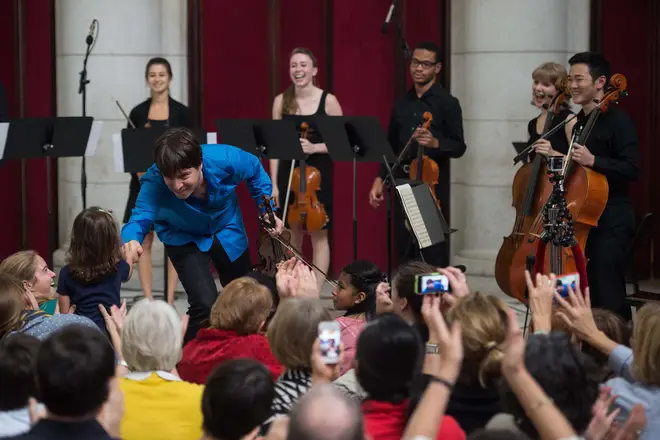On Air Now
Classic FM Breakfast with Aled Jones 6:30am - 9am
10 June 2022, 15:35 | Updated: 10 June 2022, 19:03

He’s one of the finest talents in the classical music world, and in 2007 violinist Joshua Bell went busking as an experiment. Would the public realise just what was happening, alongside their daily bustle?
Music director of the Academy of St Martin in the Fields, worldwide star soloist, and former child prodigy. His instrument is a Stradivarius from 1713 and his hair is an icon of classical music in itself....
Joshua Bell is one of the world’s great virtuosos, and one of the biggest names in classical music.
And in 2007 he did some anonymous busking, as a little social experiment to see what might happen.

The Washington Post joined Bell in his tuneful test. Ahead of the experiment, the newspaper quizzed American conductor Leonard Slatkin about his predictions.
Slatkin said, “Out of 1,000 people, my guess is there might be 35 or 40 who will recognise the quality for what it is. Maybe 75 to 100 will stop and spend some time listening.” Slatkin thought Bell might make $150 (£121) from his musical metro endeavours.
Read more: The 25 greatest violinists of all time
It was 7.51am on Friday 12 January 2007, in the middle of the morning rush hour, when baseball-capped Bell opened his violin case and started playing, just inside L’Enfant Plaza Metro entrance in the busy centre of Washington DC. Watch what happened below:

Joshua Bell's 'Stop and Hear the Music' metro experiment | The Washington Post
Over a period of 43 minutes, the violinist performed six classical pieces, two from Bach pieces, one Massenet, and one each from Schubert and Ponce.
Out of 1,097 people that passed by Bell, 27 gave money, and only seven actually stopped and listened for any length of time.
In total, Bell made $52.17 (£42.18). And this includes a $20 note from someone who recognised him.
$32.17 for Joshua Bell? It’s not exactly what we – or indeed Slatkin – might have expected. The surprising result of the experiment went viral, and was shared around the world.
Some people see it as a sorrowful tale of all the people who just walked by – of a world too busy, too preoccupied, too uncurious, or even simply disinterested in the best that classical music has to offer.
We’re not so sure.
Perhaps, it just is what it is. For those precious 40-something minutes there was music being made among us and for us; as it is every day – whether it be from a Joshua Bell, a future Joshua Bell, or a not-quite Joshua Bell (but who loves music just the same).
Many at the time also thought it a valuable reminder about the musical talent of buskers and informal performers, who are around us most days.

The informal and spontaneous theme has continued for Bell ever since. In 2014 he surprised a young busker live on television and played a duet with him. And seven years after his L’Enfant Plaza busking experience, the virtuoso returned to the Washington DC Metro. All was very different the second time around.
The violinist returned with players of National YoungArts Foundation, and a bit more fanfare. There was press attention and Instagram pictures galore.

15 years later, the social experiment is one that’s still talked about (with varying levels of accuracy, according to the feature’s original author). It’s also one that’s often recreated in the social media age.
Maybe the biggest lesson is just in the power of music, whether seen or unseen, noticed or unnoticed. And don’t you just wish that the next time you walked into a railway station, there was a Joshua Bell, or a Nicola Benedetti playing Bach’s Chaconne for solo violin?